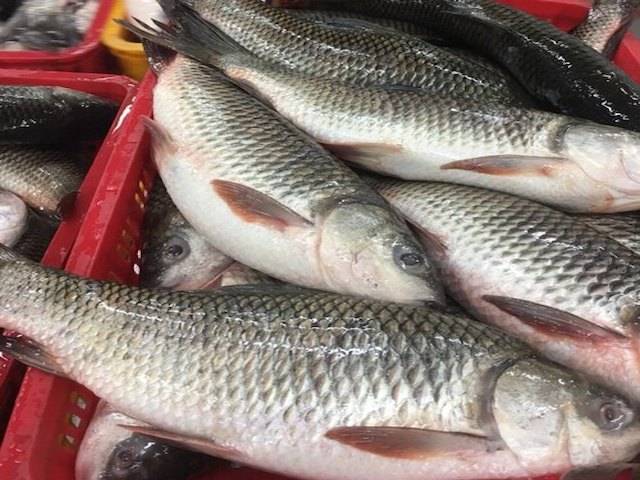
Rohu (Roho Labeo or Labeo rohita) is a freshwater fish that is popular in India and other areas of the world, particularly in Southeast Asia. This fish is also known as Rui, Ruee, or Tapra. The genus "Labeo" and the family "Cyprinidae" are both used to describe the Rohu fish. Rohu fish is one of the most popular carp fishes owing to its flavour and market demand. With excellent farm management methods, farmers may expect significant income from Rohu fish cultivation.
This fish is commonly served as fried fish at celebrations in South India. People frequently mistake Rohu with Catla fish due to their similar form and size.
Rohu Fish Breeding
Rohu fish reach maturity at three years of age, and a female Rohu fish has around 3 lakh eggs. The optimal time to deposit eggs is from April through July. Rohu fish only lay eggs in open waters, not in stagnant water.
Rohu Fish Seed Collection
Commercial Rohu fish breed culture is prevalent, and induced breeding is a substantial contributor to all countries' seed requirements. Rohu seed may be found in freshwater rivers, lakes, reservoirs, canals, and other areas of open water. Local hatcheries are the finest source for high-quality seed collection.
Rohu Fish Rearing Fingerlings
Rohu fish should be reared in equal proportions with mrigala and catla fish, with a total density of 0.2 to 0.3 million fish per 1-hectare pond. In general, the nursery raised fish of 25 mm length Rohu should be reared further for the length of 100 mm and weight of 10 grams to 15 grams fingerlings to raise in the main pond.
Rohu Fish Pond Construction
In commercial freshwater fish culture farming, pond construction is crucial. It is not suggested to overstock Rohu fish, and this is dependent on the size of the fish fingerlings and the size of the pond. Water temperatures of 25°C to 36°C are ideal for rohu fish growth.
Rohu Fish Seed Stocking and Fertilizers
Along with the mixture of oil cake, rice bran, and wheat flakes, organic and inorganic fertilisers, as well as extra food, should be supplied in the pond. The amount to use is determined by the amount of farming intensity and the intrinsic productivity. Rohu fingerlings have a survival rate of 60 to 80 percent in general. For specific pond manures and fertilisers required for high production and rapid growth, contact your local aquaculture or fisheries department.
Rohu Fish Feeding Stats
Rohu fish eat plant and putrescent organic material, and they get their food from the middle level of the water. Rice dust, cake, broken wheat, and fish meal can be supplied as extra feed in the pond as part of commercial aquaculture to help the fish grow weight quickly.
Rohu Fish Harvesting
Rohu fish may be caught in the pond using fishing nets once they reach a weight of 500 grams. When Rohu fish reach a weight of 1 to 2 kg, they are in high demand on the market. Harvesting can be done based on the size of the fish and market demand in the area.
Rohu Fish Market Demand
Rohu fish is quite popular in India. This fish is available at most restaurants and hotels. Rohu fish is used to prepare fish fry or fish curry, particularly in south India. Rohu fish sells for around 120 to 160 rupees per kilogramme on the open market. Farmers can sell Rohu fish at local markets, event venues, and hotels, depending on their size.











